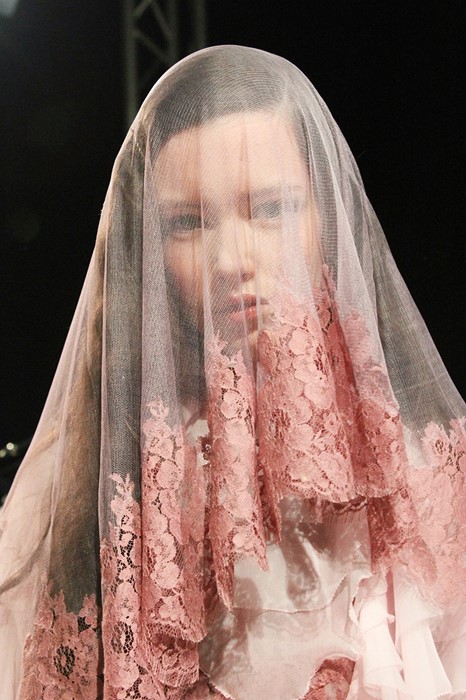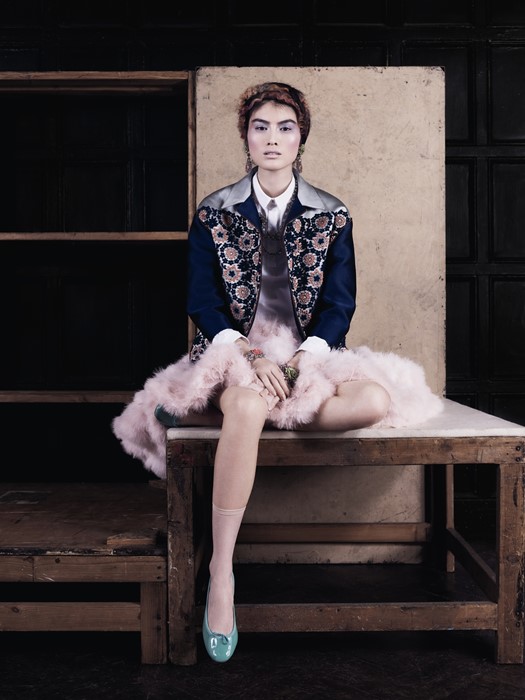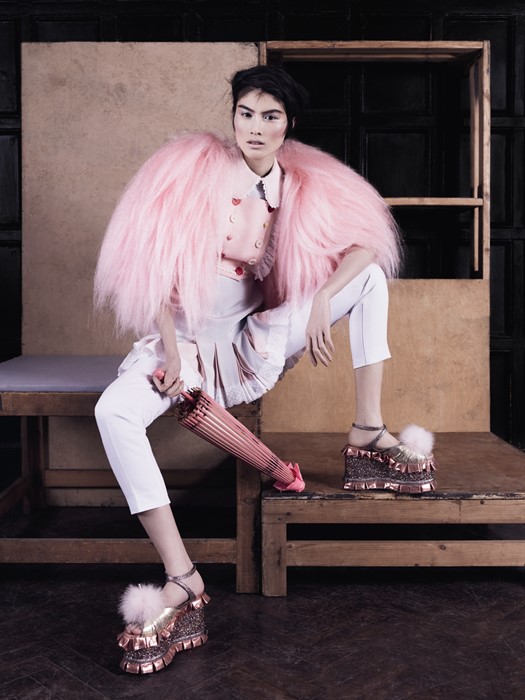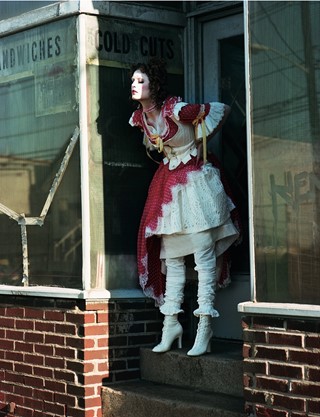During the Valentine's frenzy, where the colour pink tinges all manner of novelty consumer goods, we speak to Edward Meadham about conventions of girlishness and what they mean to him
In a week that is devoted to all things pink, frilly, girlish and heart-shaped, Meadham Kirchhoff's often hyper-kitch aesthetic seems more appropriate than ever. But their interpretation of girlhood is one that reappropriates the hyper-feminine into a new context, that looks to riot grrrlhood heroines and protest, that dismantles gender binaries rather than reinforcing them. Here we speak to Edward Meadham, one half of the design duo, about what girlishness means to him and his collection of heart-shaped chocolate boxes.
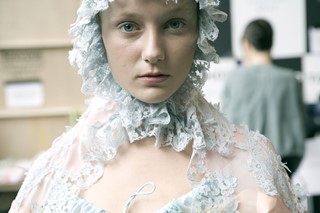
Why have you often felt drawn to an aesthetic typically associated with girlishness in your collections?
Since early childhood, I have felt attracted to all types of girls’ things; clothes, toys, 'activities'. I always related to girldom, and never to boyhood, masculinity or patriarchy.
Do you attempt to subvert those typical associations?
I think it is important – no, essential – to disrupt the accepted rules that our society prescribes on gender and sexuality. To me, they are archaic and irrelevant.

When were you first drawn to that aesthetic?
As a child, I felt very alien to my gender. I knew that I was supposed to want to play army with the boys, to get muddy, play football, wear boy clothes and have short hair. Conversley, my sister was put into dresses with her hair in pigtails and told that she was pretty all the time. Neither of us related to the genders to which we were expected to conform… I played with her toys and dreamed of dresses, ringlets and pretty things. So, from a really early age, I reacted against what made no sense to me. I have no specific memory of when or what first attracted me to what we understand as “girlishness”… it was since birth, I think.
"The rigid structure of gender binaries have little to no relation to the actual human psyche" — Edward Meadham
Meadham Kirchhoff plays a lot with stereotypes of gender and sexuality; what motivates that?
I am not a girl, I don’t identify as female but neither do I entirely identify as male. The rigid structure of gender binaries have little to no relation to the actual human psyche. The human brain is way more complex than to expect individuals to fall seamlessly into one of only two prescribed genders. To me, gender roles seem entirely reductive and ridiculous.
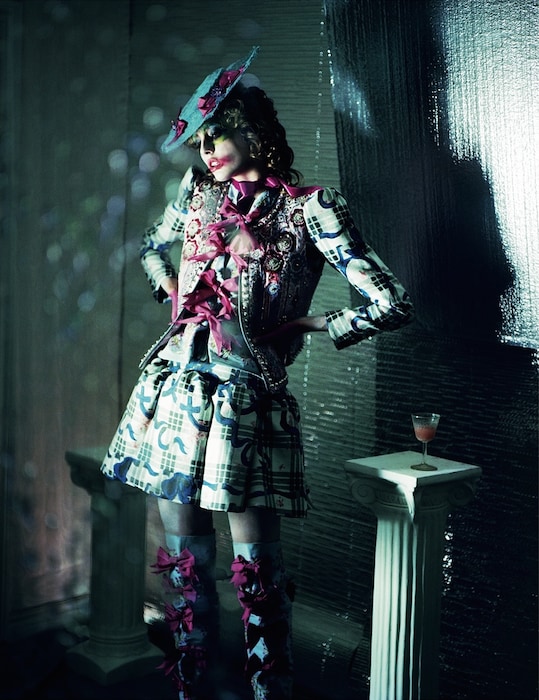
Do you think that fashion has the power to promote social change?
Fashion can be a reflection of our society. I think that fashion, in terms of the ‘industry’, has limited power – mainly because it is reductive and transient. The speed of change in fashion is a necessary thing, but it means that change and the power for change gets quickly forgotten. But I do think that fashion on a personal level has the power to change perceptions; clothing has the power to reflect and express personal feelings on all levels.
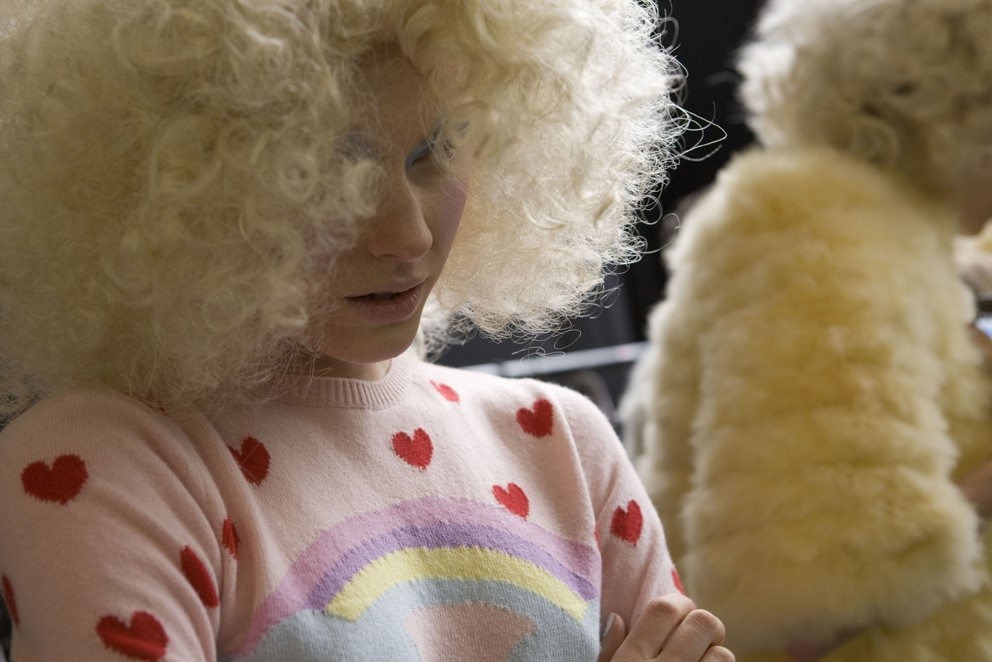
How do you feel about Valentine’s Day? Do you care at all?
Ugh. I am very depressingly single for the first time in 12 years. With no collection to make, I would actually have had the time and mental capacity to ‘celebrate’ February the 14th but unfortuntately, I will be alone. I do, however, love Valentine paraphanalia; I collect heart-shaped chocolate boxes, and general mid-20th Century ephemera. It is quite intrinsic to my aesthetic.
